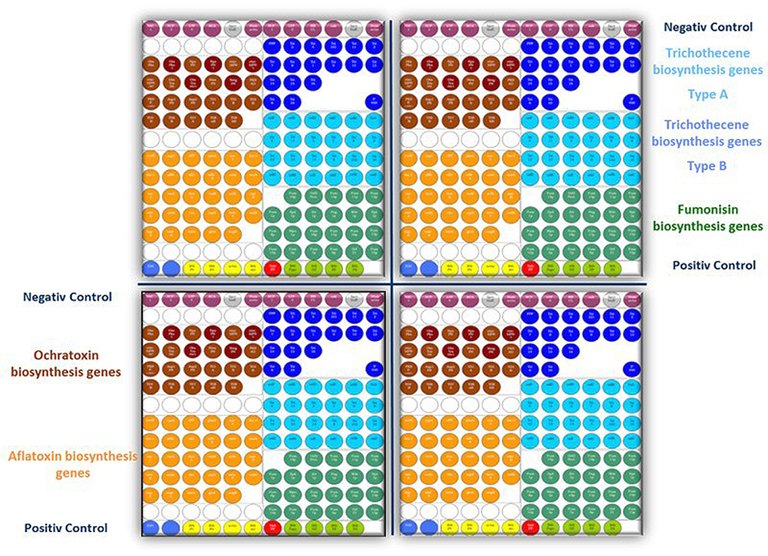Cellular regulatory pathways in fungi
What does stress have to do with mycotoxins?
Filamentous fungi are important spoilage organisms of fruits and vegetables. It is estimated that well over 25 percent of the world's annual harvest is lost to fungal contamination. To make matters worse, many species of fungi are capable of producing secondary metabolites, such as certain antibiotics and toxins (mycotoxins). The mycotoxins aflatoxin, alternariol, tenuazonic acid, altertoxin, ochratoxin A, citrinin and the trichothecenes formed by various Aspergillus, Alternaria, Penicillium and Fusarium species are very significant for food safety. Aspergillus species are adapted to higher temperatures and are therefore responsible for the presence of aflatoxins on corn, millet, peanuts, pistachios and dried fruits, as well as ochratoxin A in coffee, cocoa, spices and grapes from southern regions. Penicillium and Alternaria species, on the other hand, tend to prefer moderate temperatures and therefore play a role as mycotoxin producers, especially in central and northern Europe. Fusarium species are distributed worldwide and adapted to a wide range of temperatures.
As secondary metabolites of fungi, mycotoxins are not essential for their survival and are therefore only formed under certain conditions. Extensive studies at the Department of Safety and Quality of Fruit and Vegetables showed that conditions that cause stress for the fungus (e.g. low temperatures, low water activity) promote mycotoxin formation. This fact plays a particularly important role in the processing and storage of plant-based foods, where low fungal growth cannot always be completely ruled out, thus compromising food safety. The Department of Safety and Quality of Fruit and Vegetables is therefore intensively researching the influence of environmental conditions on the activation of toxin formation. Investigations using a DNA microarray developed by us have shown that external parameters have a strong influence on transcriptional activity, i.e. the activation of mycotoxin biosynthetic genes: Depending on the external condition, these genes can be activated (undesired) or inactivated (desired). This has been systematically studied for plant foods under a wide variety of combinations of growth and storage conditions. Among other things, it was shown that various stress factors, such as light, temperature, water activity, pH or preservatives, can lead to a reduction in fungal growth but also to increased mycotoxin formation.
The influence of these external parameters on the activation of mycotoxin biosynthetic genes occurs via specific cellular signaling cascade pathways (Figure 1). Often, a receptor molecule (e.g., an Osmo sensor) exists in the cell wall or cell membrane that transmits information about changes in external parameters to the nucleus, which can activate or inactivate genes. The intermediate steps, from membrane sensor to gene regulation, are usually different kinases connected in series (Mitogen Activated Kinases, MAP kinases). An important kinase in this regulatory network is the so-called HOG kinase, which plays a major role in the cell's response to various stress factors. This kinase therefore appears to be centrally involved in the environmental activation of mycotoxin biosynthesis. If its function is precisely known, new strategies for the prevention of mycotoxin formation in food can be developed. In several projects (e.g. AflaZ and Alternaria-UBMAL), the role of HOG kinase and other key elements of signaling and regulatory pathways in fungi are being studied in more detail. The goal is to find ways to influence their activity and thus downstream processes such as fungal growth and mycotoxin formation. For example, the HOG kinase has already been detected in alternariotoxin- and ochratoxin-forming fungi and it has been shown that phosphorylation (metabolic activation) of this kinase is related to mycotoxin formation.


